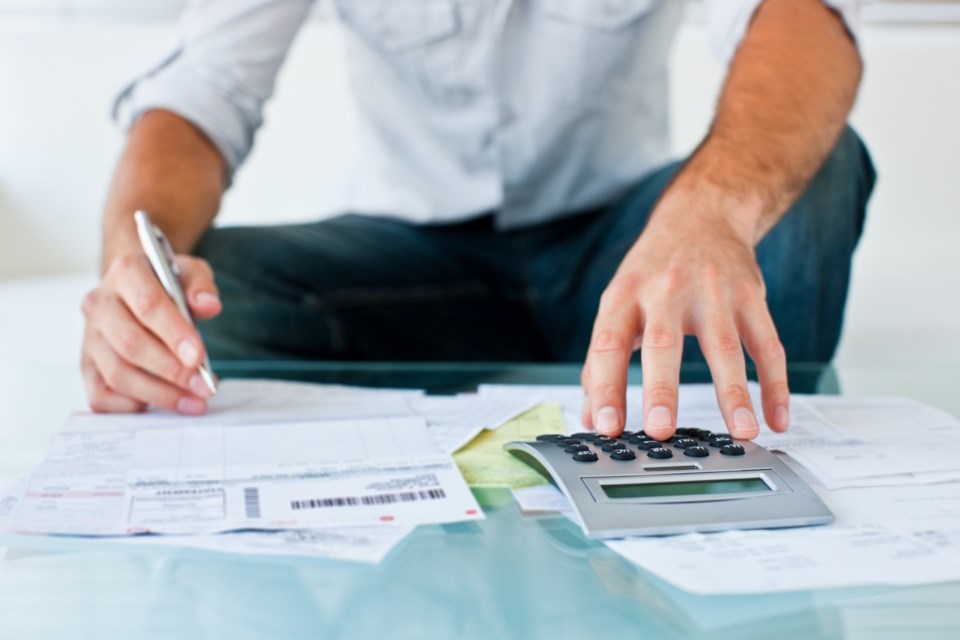I’ve always had a complicated relationship with money, best described by the fact that I will happily eat peanut butter and banana sandwiches for lunch every day to economize and then spend hundreds of dollars on a new gadget I will never have time to learn, much less enjoy.
I won’t replace a 15-year-old puffy coat that blizzards goose down everywhere I go but will happily blow $12/month on Disney+ to watch reruns of Scrubs. I know enough math to calculate how much my savings are losing value relative to inflation but will also buy lottery tickets with odds of 33 million to one.
I know the value of a dollar. But I also kind of don’t.
I grew up in a middle-class family where money wasn’t an issue—we didn’t waste it, but we also didn’t worry. Then my father lost his job, one of the many neighbourhood dads laid off in the deep recession that hit Toronto particularly badly in the early ’90s. Men who wore tailored suits and carried briefcases to their executive jobs on Bay Street found new careers in the dairy section or mixing paint at the local hardware store—and those were the lucky ones.
Suddenly money became a lot more important, and the stress of not having any eventually led to the separation of my parents, the sale of our house, and years of poverty.
I spent my college years, and years after, in a perpetual state of boom and bust, feast and famine, splurge and purge. I earned money at various jobs, but never enough, and gradually sank into debt—student loan and credit cards mostly—that stressed me out if I slowed down enough to think about it. It’s hard to know what the low point was; I’ve slept in cars and the floor of my grandmother’s pad in the seniors’ home; lived off onions and bouillon cubes for a week; made use of food banks; sold some of my dad’s antique duck decoys to pay debt collectors; and once used a borrowed car to round up bottles from year-end parties around campus so I could afford a train ticket home. It wasn’t fun.
I mention all of this because we’re entering a period of extreme inflation. Mortgage rates, food, gas and everything else is going up with inflation, which has doubled. Some 53 per cent of Canadians are nervous they aren’t going to be able to pay their bills and put food on the table.
Ordinarily I’d be panicked, but through my trials and tribulations I actually learned how to keep to a budget, coming up with an easy and realistic system that has worked for me and may work for you as well.
I call it Threshold Budgeting, and it’s even less exciting than it sounds.
First, you need to know what your income works out to on a daily basis. If you’re on salary, multiply your after-tax pay by your 24 or 26 pay periods, then divide that number by 365. If you’re hourly, average out your pay for the last 10 or so paydays to estimate your annual and daily earnings.
Next, you need to add up your fixed costs—mortgage, rent, loan payments, phone and internet plans, insurance premiums, utilities (get on an equal payment plan), subscriptions, prescriptions, memberships, savings programs, ski passes, etc. All the expenses you can predict. Multiply the total to get to one year and then divide by 365.
Use a spreadsheet so you can adjust these numbers as they change over time. Free versions of Excel, Google and Numbers will work.
The final step is to subtract your daily fixed costs from your daily fixed income to find out your “threshold.” That represents all the money you have for all the other less predictable and sometimes optional expenses in your life—groceries, restaurants, gas, entertainment, clothes, sporting goods, you name it.
Let’s say you come up with a daily threshold of $60. That’s not a lot and it’s a safe bet you’re going to go over on the days you buy gas or go grocery shopping. Let’s say on day one you spend $130, so right away you know you’re heading into day two over budget by $70. The next day you buy a sandwich and a beer for $20, which means after two days you’ve earned $120, spent $150, and are now $30 in the hole. The next day you spend nothing so you end day three with a positive balance of $30. When you wake up on day four you’ll have $90 available.
This system works for me because I can track the numbers in my head. I don’t need to keep receipts or check my credit card statement, or even know where my money is going—I just need to know if I’m up or down so I can make better decisions. Other budgets never worked for me because I never really knew where I stood until it was the end of the month and it was already too late to cut back. Most of us get paid two or three times a month but we spend money almost every day.
I used to be afraid to check my bank account. Now I’m just afraid of Putin.




